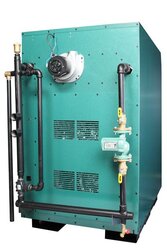my question is...if I hook a mixing valve in to protect my boiler, will it further reduce or otherwise restrict flow in a probably already too small pipe? My profab 200 boiler manual says absoulty nothing about return temperaturs less than 140 are verbottten, but I find out on hearth.com that its required. Im using one inch thermpex insulated unerground pipe...most likely very undersized as part of decisions made before hearth.com visits. Yes, i know i need a heat loss done...I will get working on that for sure. Im looking at solutions either electrical switch or mixing valve. I would prefer mixing valve as I think its variability will help keep some hot water flowing in my conc slab radiant system...
thanks in advance!
TIm
thanks in advance!
TIm


